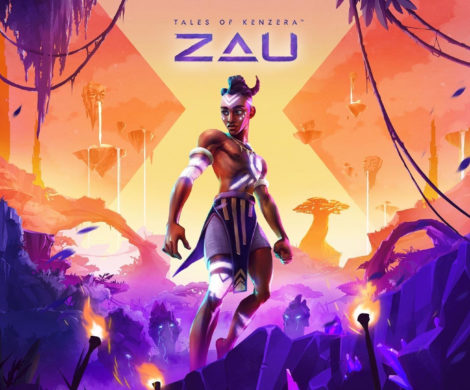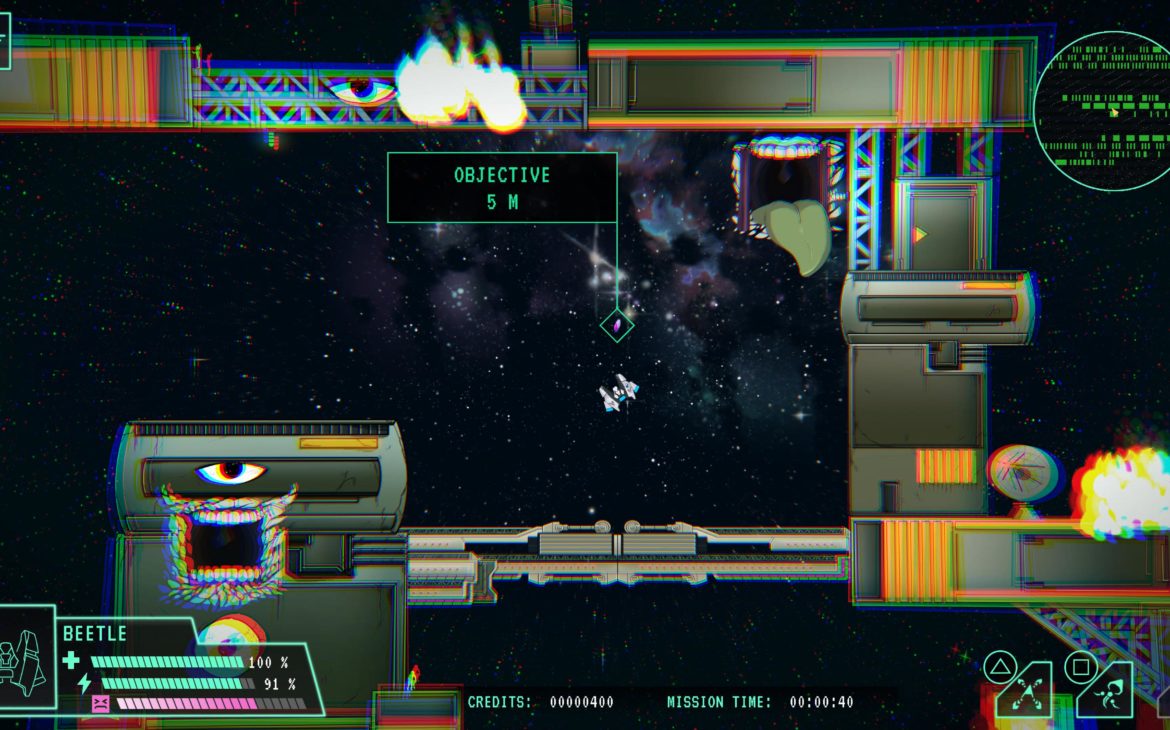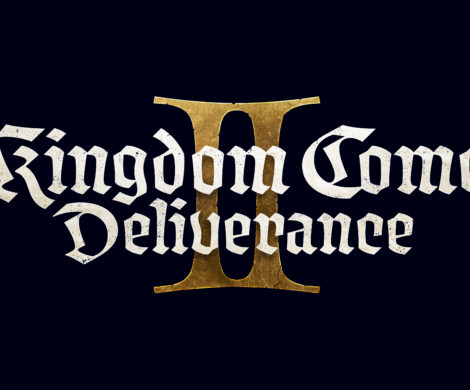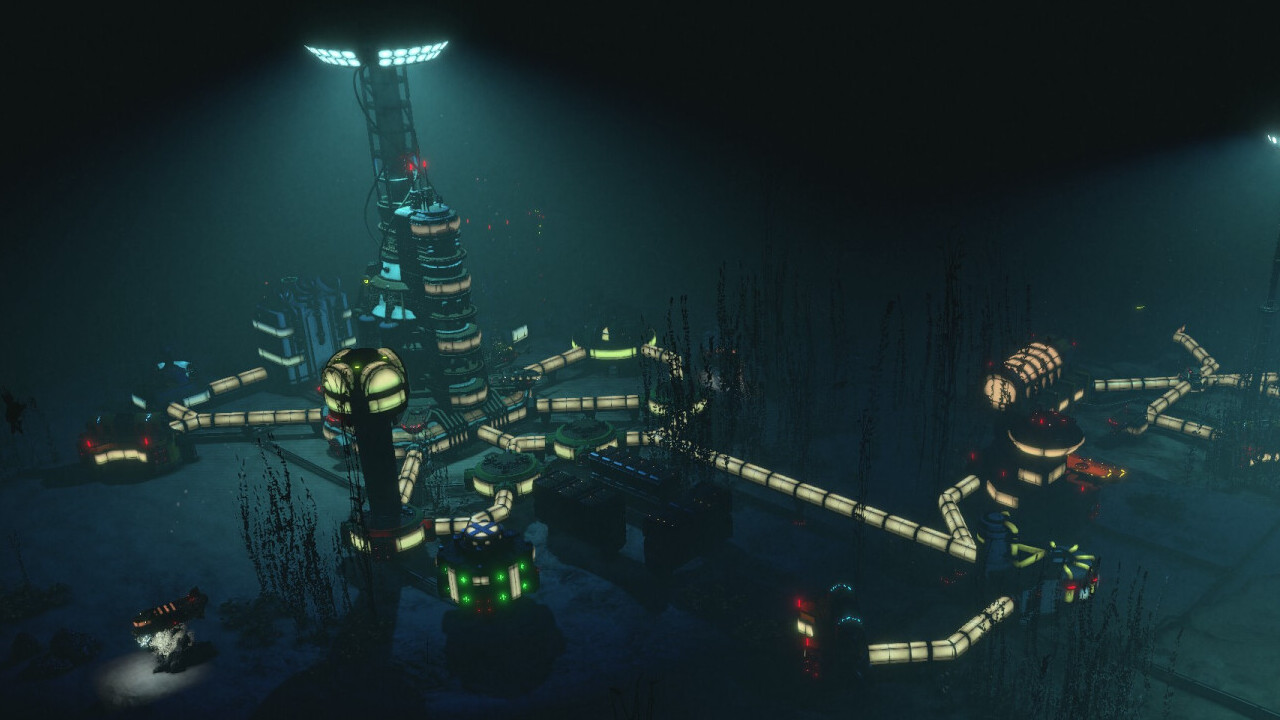
The year is 1976 – The Cold War is in full swing, and technological research continues unabated. New technologies such as satellites, nuclear power, and computers take the limelight, but one even more secretive technology is being pursued – cloning. In the search to create the perfect human clone, you’ve been sent to the bottom of the sea to progress your research in extreme secrecy. However, the serene nature of the bottom of the sea is but an illusion; you’ll face many difficulties you’ll need to overcome, and you’re not alone down here… this is Surviving The Abyss.
Life Under The Sea
Surviving The Abyss is a new settlement management game releasing into early access, developed by Rocket Flair Studios and published by Paradox Arc. The next entry into the Surviving series, this time instead of colonising Mars or surviving in the apocalypse, you’ll be sent to the bottom of the seas to perfect cloning. The bottom of the sea may be tranquil, but you’ll be presented with plenty of challenges in your bid to be able to make perfect human clones.
The premise of Surviving The Abyss is that, with the Cold War at its height and technological research towards cloning between the two sides progressing at a breakneck pace. To begin with, research into the subject looked promising and some initial success was seen – however, the human clones all died in gruesome manner, and this meant setback for the scientists. Once the public found out about these experiments, there was great societal unrest and upheaval, and so publicly the project was cancelled. The military, however, didn’t want to put such a promised technology in their eyes to waste, and so offered the scientists a deal – they could continue their research, but it would need to be in a place away from prying eyes. Where better to hide something, than the bottom of the sea?
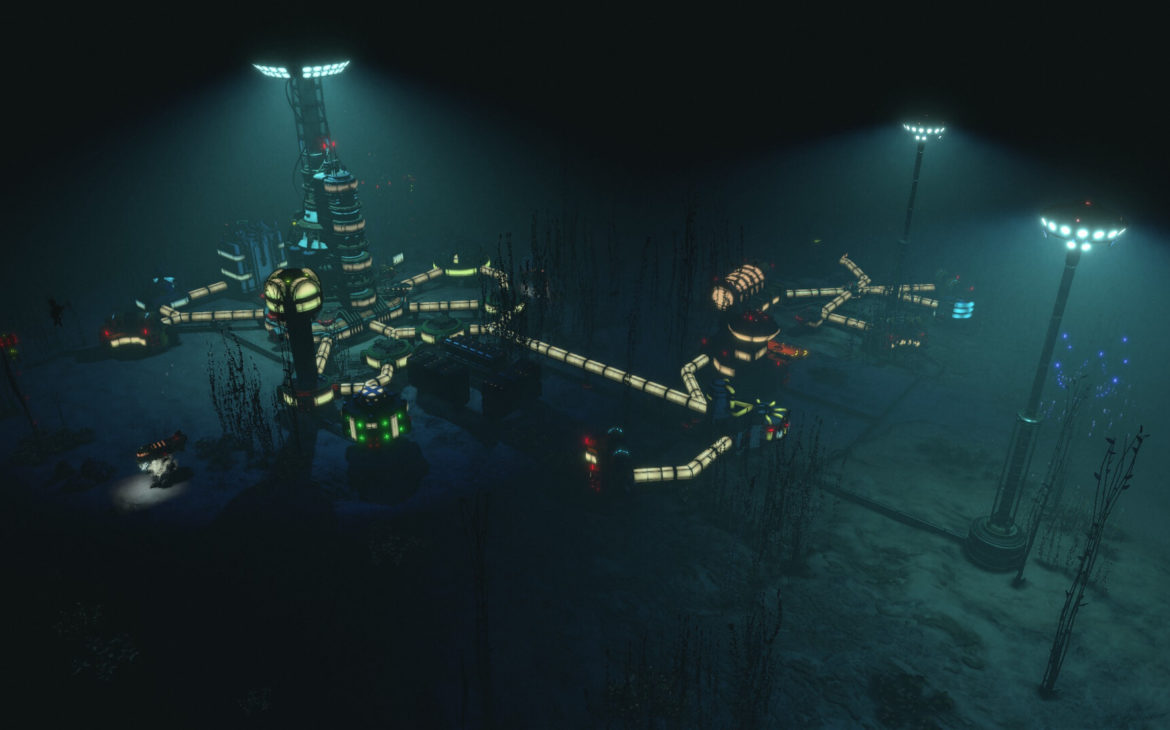

Such Wonderful Things Surround You
To begin with, you won’t have much to start with – you’ll have your main colony building, the central hub, around which you’ll start building your settlement. There are several types of buildings in the game, ranging from resource production to life support to the facilities required for the aforementioned cloning. All are important – you’ll need houses for your staff, food production to make sure they don’t starve, and oxygen facilities to make sure your staff can breathe, as well as power production to make sure your buildings are operational. Finally, you’ll need to make sure tunnels connect your various buildings, that they’re accessible, and that there are power lines under your buildings so they have power. Once these basics are done, you’ll then have the option for resource production and research, and eventually cloning.
There are several types of building resources in Surviving The Abyss and making sure you have enough of them is very important. The most important ones, to begin with at least, are steel, concrete, quartz glass and coal. The first three of these are used to construct your starting facilities and are generally all you’ll need until you’ve researched more advanced building types. Later, once you’ve done some exploring, you’ll also need to find and mine aluminium, copper, lead, and oil. Again, the first 3 are used mostly for building production, but oil is an upgrade to coal and allows for increased power production, something you’ll need once your settlement reaches the advanced stage. The final resource types are food, research, and genomes, and I’ll detail these later in the review as they deserve their own paragraph.
When expand your base, you’ll need to build light towers; within the radius of these, you can safely build and your staff won’t be scared of the darkness. These light towers do consume quite a bit of power, and early on its difficult to maintain more than one of them due to this, when taking all your other facilities into account. There are also sonar towers which you’ll need to construct – these are used to pinpoint habitats, points of interest, resource deposits and fuel locations. One you’ve found everything within the radius of a sonar tower, its best to deconstruct it and build another elsewhere to continue your search.
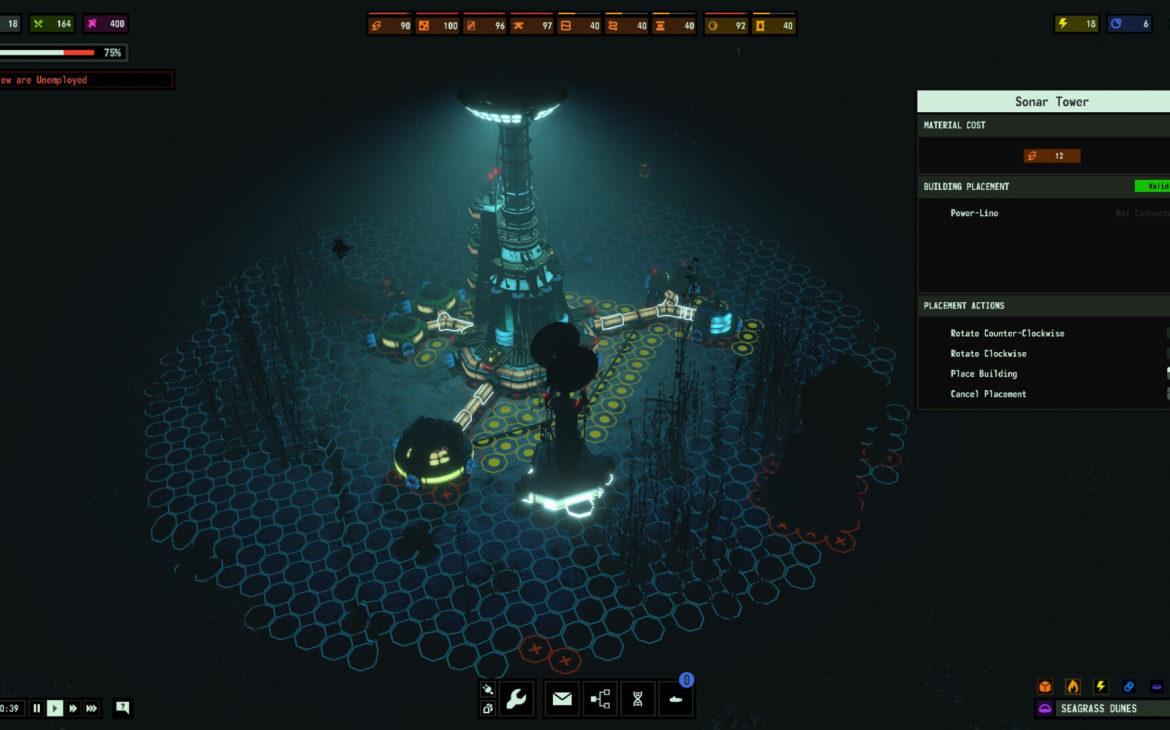

Since Life Is Sweet Here
To begin with, your resource production is based around finding small existing pockets around your base and mining them with mining ships. However, these have a finite number of resources, and they will quickly run out – establishing a more permanent way to produce resources is paramount as they are scarce and if you’re not careful, you can end a run prematurely as you just don’t have enough resources to go around. With the relevant research, however, you can construct extractors that will allow you to gather resources from the deposit permanently. To begin with at least, these extractors are quite slow and take a up a lot of your staff to man them properly, and they may well be needed elsewhere, for food production as an example.
Food is an important resource in the game, and key to your colony – if you run out, your staff will not be happy with you and eventually starve. There are two types of food – low and high quality. Low quality food is more plentiful and produced by carbohydrate farms – its easier to produce a lot of low quality food quickly, and at the beginning of the game you’ll need to go down this route in order to satisfy your staffs needs, but it does have a drawback – your staff, if they don’t have any high quality food to go with it, will become malnourished and take a hit to their health. High quality food, on the other hand, is produced in protein farms. These must be placed on top of a nearby habitat, and they also produce a lesser amount when compared to the low-quality carbohydrate production. Generally, you’ll want to mix in a few protein farms to your food production as you progress later into the game, to make sure you have enough food to satisfy your staffs needs as well as making sure they’re not just eating unhealthy food.
Research is key in Surviving the Abyss and will be a crucial resource you’ll need to manage in order to progress further into the game. Research data is gathered each day via your laboratories: you’ll have a basic research lab you can construct from the start of your run, with the ability to access tier 1 technology such as unlocking basic buildings such as extractors, biomass generators and unlocking your basic farms, as well as small improvements to some of your buildings such as better efficiency for your coal generators. Tier 2 research unlocks more advanced buildings and improvements, such as an oil drill for a more advanced power generator, or a more advanced living quarters with more space for your staff to live in. Finally, tier 3 unlocks the most advanced research, allowing you to perfect your clones and have the most efficient power generation, amongst other things. Making sure you advance your research is extremely important and will have a huge impact upon your progress.
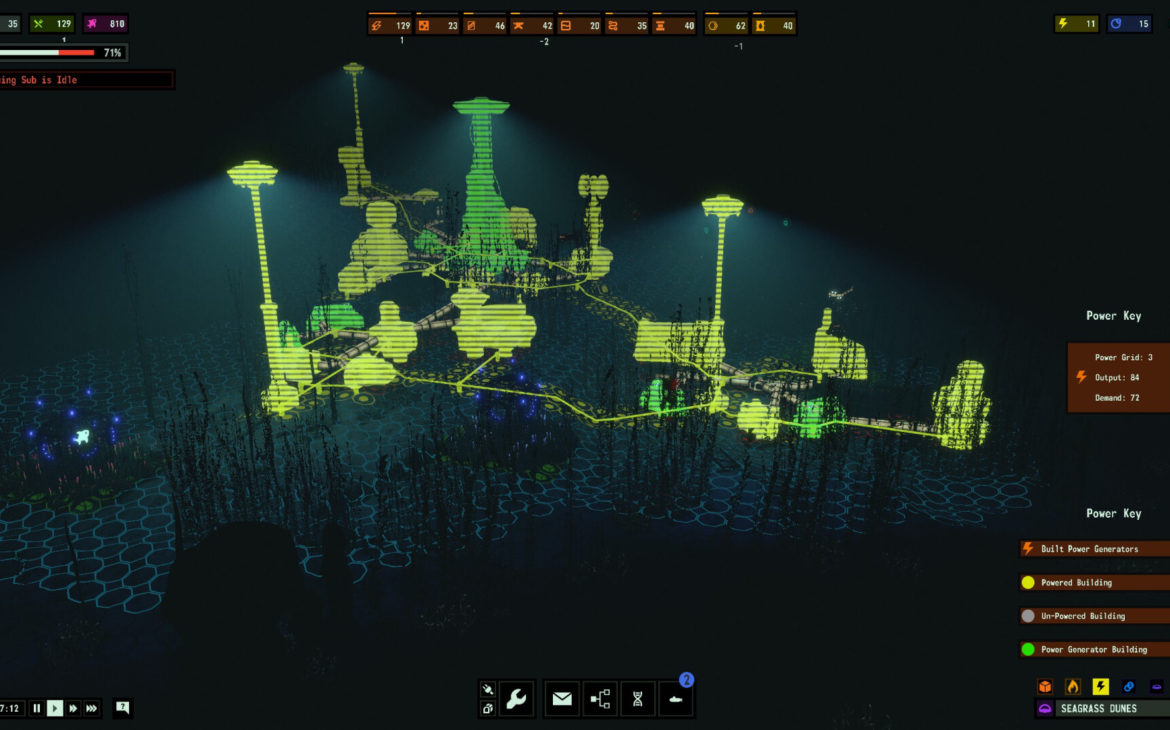

We Got The Spirit
There are 3 pop types in the game: generalists, scientists, and engineers. Each have their own niche they fit into, but to begin with you’ll only have generalists. Pretty much every building type requires them – they’ll be present in everything from coal generators to research labs and are the backbone upon which your settlement will be built upon. Engineers are the next type, and you’ll get access to one relatively early in the game, but it’ll be a while before you get access to another. They are generally put into buildings that produce or consume resources and make them more efficient – for example, power generators have a slot that can be filled in by an engineer, although they’re not a requirement for the building to run. Finally, scientists are used in most research buildings, and increase the amount of research that you’ll get from these buildings drastically; that being said, they are harder to get a hold of, and it’ll generally be much later in the game when you’ve got advanced cloning before you’ll acquire any.
Careful management of your staff in Surviving The Abyss, for the various roles of your settlement is crucial – it is rare that you’ll have enough resources to build all the buildings you want, rare that you’ll have enough staff to commit to every job, or enough power to go around to make sure every building is online. This management is extremely important and will be a large chunk of your micro in any of the runs you do. You can unassign your staff from one building and put them in another or depower one building to make sure a more important one at that moment is powered. Unfortunately, the crew management system feels a bit clunky as it just assigns your pops automatically to another slot that is open if there is one, which in theory is good but makes it a game of whack’a’mole of where the pop you unassigned went to. You can lock slots on buildings, so they don’t get filled in automatically, but doing this for every building is tedious, especially if you’re reassigned staff a lot and the lock gets turned off.
In terms of the numbers of staff that you have, you’ll start with a set amount of people, with a couple of missions giving you a small number of additional staff. Other than this, however, to increase your staff you’ll need to rely on cloning. Cloning is completed via a cloning lab and requires you to harvest relevant genomes from the various habitats that surround your base (via a fauna trap building) or to use those you’ll occasionally get from points of interest you’ve explored with a submarine. You start with 4 genome slots unlocked (with 4 more available via research) and you can use the gathered genomes to create more staff.


Just Look At The World Around You
There are various genomes that you’ll have to collect in Surviving The Abyss, and each offer various stats. Some increase the number of clones you’ll make in each batch; others reduce the chance of mutation which can have negative effects on your clones such as decreased lifespan, and other still increase the chance of successful cloning and not losing any of the batch. Most clones, until you’ve collected enough good genomes and unlocked more genome slots to use them, will have problems with longevity. When you’ve progressed far enough though, lifespan will no longer be an issue.
In Surviving The Abyss, there are various landmarks that surround your base, and you’ll need to explore these for research and resource purposes. These can range from resource deposits to the habitats you’ll need to get your genomes from, to points of interest such as a sunken plane or a cave system. The latter locations generally have an event associated with them and allow you multiple options to address them – for example, you could ignore the cave system you’ve sent your exploration submarine to but keep your crew safe. Alternatively, you can explore the system, but this can put your staff at risk and put them into the hospital, meaning they can’t work for you for a large chunk of time. In addition, random events can happen in your settlement – birthday parties may request food and give you a higher crew relation with you staff, or a clone may try to clone itself again to deal with any perceived flaws. Generally, the events and the exploration are fun, but I do wish there was more of it as there were only a few events/missions I encountered, and it feels a bit barebones overall.
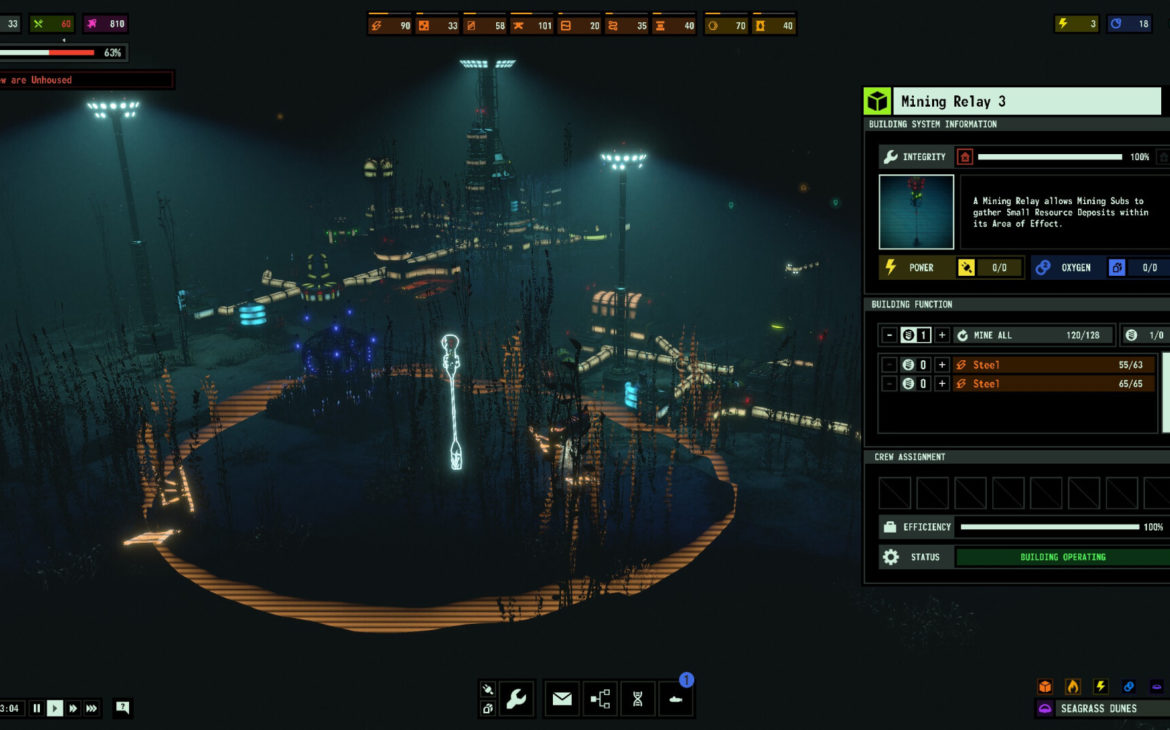

It Surely Is Better
Danger awaits at the bottom of the sea, and an unknown danger at that. Once you’ve progressed in the game a little bit, your settlement will be randomly attacked by… something. These attacks damage buildings, but not too much else at the moment; they’re more a nuisance than a true threat. They can be repelled once you have the UV light research, which allows you to turn your light towers into a repellent and stop the attacks. This does have the downside of greatly increasing your fuel usage, but is worth it so you don’t have to pay repair costs on your buildings as I generally found fuel much easier to come by.
The visuals of the game are pretty good – the setting is unique, and when your settlement looks hauntingly beautiful at the bottom of the sea when you’ve expanded a bit. The corals and habitats you’ll see surrounding your base are beautiful to look at, fish swim around your settlement and in general, its just a pretty game. The sound is also good – a relaxing, but occasionally haunting theme accompanies the bottom of the sea and is a great companion to the game. The various noises buttons make as you click them all sound fitting and don’t break immersion at all.
During my time with the game, however, I did encounter quite a lot of bugs – these ranged from my staff being trapped in submarines with no ability to unassign them elsewhere, to buildings not being placed properly (fauna traps especially were bad for this), to my staff not taking open spots in living quarters despite all the requirements being met for them to do so. This did become frustrating at times to deal with.
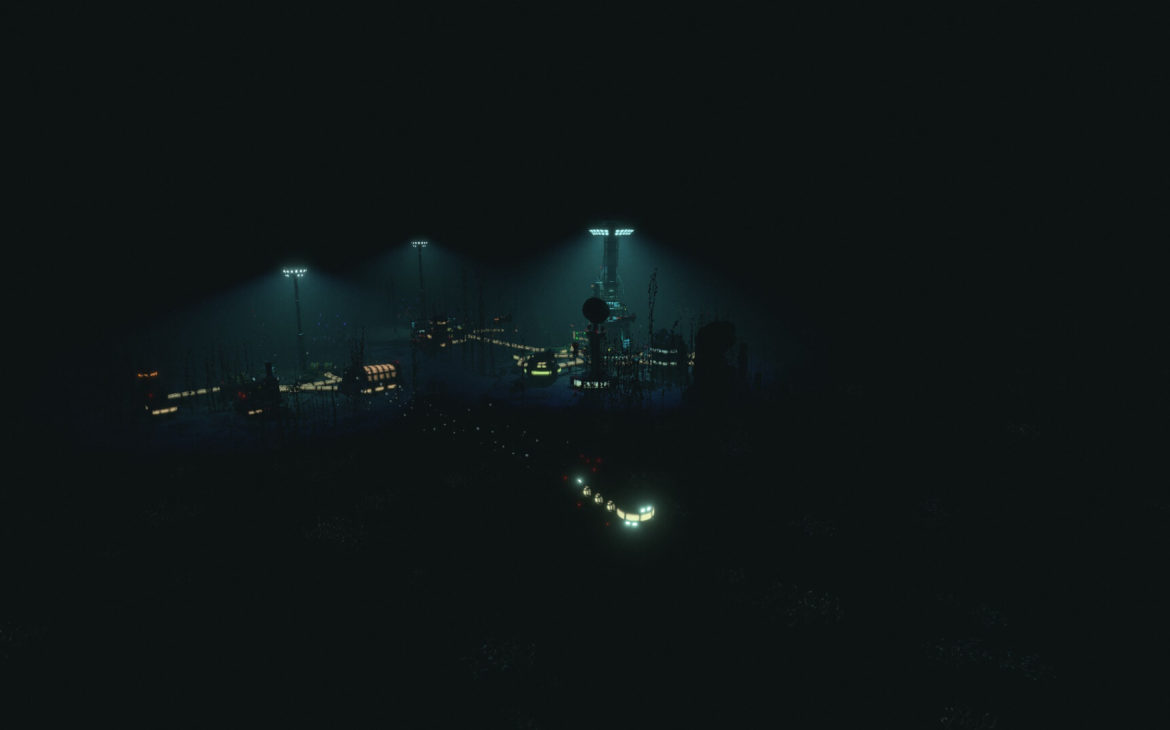

The Human World, It’s A Mess
In addition, some of the design decisions also need work. Early on, you’ll have a reliance on clones that have a limited lifespan, and each one (when they eventually die) will end up giving you a permanent malus to crew relations. I feel this needs changing to be a very slow decay, to give the player some agency in refilling their relations bar. Another example is that the starting resources outside your base are randomised – I had a game where I had no surrounding steel, and another with no coal. This made it extremely difficult to actually continue the game and ended multiple runs very early due to it.
The final thing I want to mention is the amount of content currently available – there is about 10-15 hours of content in a run, although it is an early access title and more will be added moving forward. I also feel like the developers haven’t made the most of the setting just yet – the Cold War offers all sorts of possibilities and has a lot of untapped potential. On top of this, after you’ve completed the first few missions in the introduction you don’t really have any contact with the surface, which is something I’d like them to expand upon as well.
Overall then, Surviving The Abyss is an enjoyable game which needs to use this Early Access period to productively. There are problems, and I hope these are addressed over the early access lifecycle, but there is a lot of fun to be had here too. Hopefully, with more content added and some bugs squashed, the game can live up to its unique potential and bring hours of entertainment at the bottom of the sea.
Surviving The Abyss is available now on PC via Steam
Developer: Rocket Flair Studios
Publisher: Paradox Arc
Disclaimer: In order to complete this Review, we were provided with a promotional code from the publisher. For our full review policy, please go here.
If you enjoyed this article or any more of our content, please consider our Patreon.
Make sure to follow Finger Guns on our social channels. Twitter, Facebook, Twitch, Spotify or Apple Podcasts – to keep up to date on our news, reviews and features
